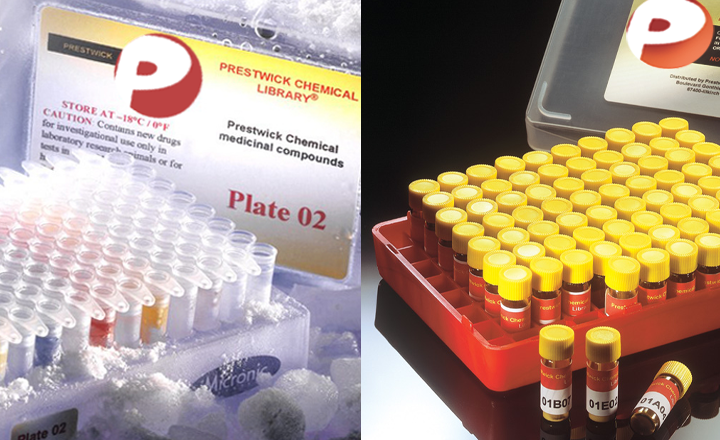Minigenome-based reporter system suitable for high-throughput screening of compounds able to inhibit Ebolavirus replication and/or transcription
Jasenosky LD, Neumann G, Kawaoka Y
Antimicrobial Agents and Chemotherapy - vol. 54 3007-3010 (2010)
Antimicrobial Agents and Chemotherapy
We describe an Ebolavirus minigenome-based system that is suitable for high-throughput screening of compounds able to impair Ebolavirus virus replication and/or transcription. The assay is robust (Z factor, >0.6) and can be carried out in low-biosafety containment. Results from a pilot screen of 960 compounds are presented. Ebolaviruses and the closely related Marburgviruses cause hemorrhagic fever in humans and nonhuman primates, with high mortality rates (18). Currently, treatment of these infec-tions is limited to supportive care (1). The need for efficacious therapeutics is further underscored by the increasing frequency of Ebolavirus outbreaks in both humans and endangered great ape populations (2, 20, 21). High-throughput screening (HTS) systems should be robust with high reproducibility and should be amenable to work in low-biosafety containment. Ebolavirus is categorized as a bio-safety level 4 agent, and HTS systems that rely on live Ebola-virus are thus impractical. Here, we describe a minireplicon system to screen for compounds that interfere with viral rep-lication and/or transcription. In these systems, a virus-like RNA encoding a reporter protein is amplified by the viral proteins required for replication and transcription, i.e., the Ebolavirus polymerase (L), nucleoprotein (NP), and VP30 and VP35 proteins (10, 14). A minireplicon system based on Zaire Ebolavirus developed in our laboratory was taken as a starting point (22). First, we generated a reporter construct (p3E5E-Luc) in which the open reading frame (ORF) for the luciferase gene (in antisense orientation) is flanked by the Zaire Ebolavirus leader and trailer regions (which contain the viral promoters for replica-tion and transcription) and by T7 RNA promoter and termi-nator sequences (Fig. 1A). Next, we transfected human em-bryonic kidney (293T) cells with p3E5E-Luc, pC-T7 (for T7 polymerase expression [15]), and pCEZ-NP, pCEZ-VP35, pCEZ-VP30, and pCEZ-L (for the expression of the Zaire Ebolavirus NP, VP35, VP30, and L proteins, respectively [15]) using Trans-IT LT1 reagent (Mirus); the amounts of the re-spective plasmids are listed in Table 1, Setup number 1. To determine background expression levels of luciferase in the absence of a functional nucleocapsid complex (negative con-trol), we substituted empty vector for pCEZ-L. Forty-eight hours posttransfection, an equal volume of Steady-Glo lucif-erase assay substrate (Promega) was mixed with each sample and luminescence was measured. Mean luciferase expression and standard deviations were obtained by measuring lumi-nescence in eight separate wells for both the positive (with pCEZ-L) and negative (without pCEZ-L) controls. For this and all subsequent experiments, we next calculated the ZЈ factor (24) as a measure of the robustness of the assay: ZЈ ϭ 1 Ϫ [3 ϫ ( p ϩ n)/( p Ϫ n)], where p is the standard deviation of the positive control (reporter protein expres-sion from the minireplicon), n is the standard deviation of the negative control (reporter protein expression in the ab-sence of the L protein), p is the mean of the positive control, and n is the mean of the negative control. The ZЈ factor incorporates the dynamic range between positive and negative controls, as well as their well-to-well variability. A ZЈ factor of Ͼ0.5 is recommended for a robust screen, and values above 0.75 are preferred before transfer to a 96-well platform because the ZЈ factor usually declines during ad-aptation to smaller formats (24). In this assay, we found high well-to-well variability for the positive control and marked luciferase expression in the neg-ative control (i.e., in the absence of the polymerase protein) (Fig. 2A). The signal-to-background ratio was 88:1 and the ZЈ factor was 0.53, which is considered too low for transfer to a HTS protocol. To improve the signal-to-background ratio and the ZЈ factor, we next tested a minireplicon system that utilizes cellular RNA polymerase I for the transcription of virus-like RNAs (10). In this approach, the RNA polymerase used for the synthesis of virus-like RNAs is no longer provided from a plasmid, thus reducing the number of plasmids needed and thereby poten-tially increasing the robustness of the system.


